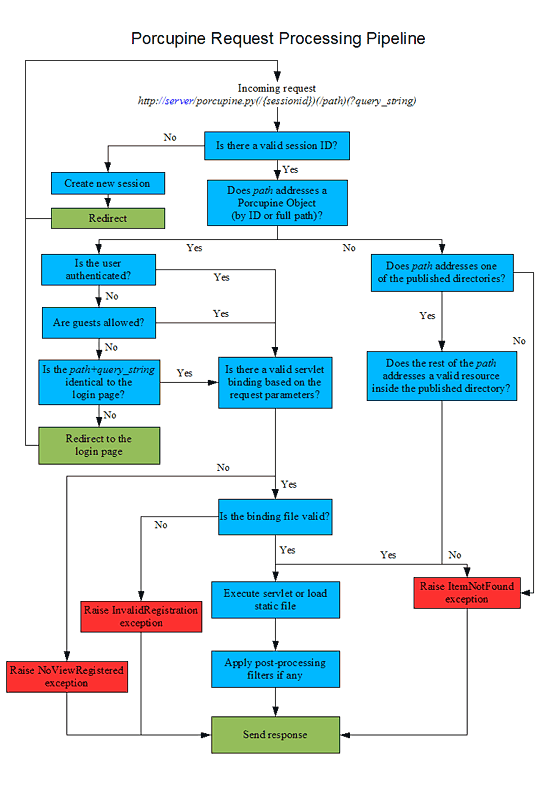
|
Articles /
The Porcupine Request Processing PipelineArticles.RequestProcessingPipeline HistoryShow minor edits - Show changes to markup November 01, 2005, at 10:59 PM
by -
Changed lines 36-37 from:
 Diagram 1 to:
 Diagram 1 - The Porcupine request processing pipeline November 01, 2005, at 10:55 PM
by -
Changed lines 36-37 from:
 to:
 Diagram 1 November 01, 2005, at 10:52 PM
by -
Added lines 36-37:
 November 01, 2005, at 10:42 PM
by -
Changed lines 8-15 from:
to:
Changed lines 32-33 from:
http://server/porcupine.py/{ab9e44738ce39448c8b245d6706dea9a}/Administrative Tools/Users and Groups/Administrators
to:
http://server/porcupine.py/{ab9e44738ce39448c8b245d6706dea9a}/
Administrative Tools/Users and Groups/Administrators
Changed lines 36-39 from:
to:
Changed lines 54-57 from:
to:
Changed lines 66-67 from:
to:
Changed lines 83-85 from:
to:
November 01, 2005, at 10:38 PM
by -
Changed lines 3-4 from:
Knowing the steps taken by Porcupine before a servlet is executed, will help you understand one of the most important internal mechanisms. This article describes the server's execution plan from the moment a client request is picked up from the queue until the response is sent back to the web connector and then back to the client. to:
Knowing the steps taken by Porcupine before a servlet is executed, will help you understand one of the most important internal mechanisms. This article describes the server's execution plan from the moment a client request is picked up from the queue until the response is sent back to the web connector and then back to the client. Changed lines 12-13 from:
Porcupine objects can be addressed by using the object's ID or the full path. The latter is slower, since the server retrieves all the objects contained in the path by their display name, but more readable. Some examples of HTTP requests that address Porcupine objects are: to:
Porcupine objects can be addressed by using the object's ID or the full path. The latter is slower, since the server retrieves all the objects contained in the path by their display name, but more readable. Some examples of HTTP requests that address Porcupine objects are: November 01, 2005, at 10:35 PM
by -
Changed lines 1-2 from:
to:
Changed line 29 from:
to:
Changed lines 36-37 from:
http://server/porcupine.py/__xul/xul_core.js to:
http://server/porcupine.py/__xul/xul_core.js Changed lines 40-42 from:
<context path="xul_core.js" method="GET" client="Netscape/7|Mozilla/5.0" lang=".*" action="core_moz.js" filters="porcupine.filters.postprocessing.Gzip" /> to:
<context path="xul_core.js" method="GET" client="Netscape/7|Mozilla/5.0" lang=".*" action="core_moz.js" filters="porcupine.filters.postprocessing.Gzip" /> Changed lines 45-50 from:
to:
November 01, 2005, at 10:33 PM
by -
Changed lines 1-3 from:
Knowing the steps taken by Porcupine before a servlet is executed, will help you understand one of the most important internal mechanisms. This article describes the server's execution plan from the moment a client request is picked up from the queue until the response is sent back to the web connector and then back to the client. to:
November 01, 2005, at 10:23 PM
by -
Added lines 1-3:
Knowing the steps taken by Porcupine before a servlet is executed, will help you understand one of the most important internal mechanisms. This article describes the server's execution plan from the moment a client request is picked up from the queue until the response is sent back to the web connector and then back to the client. |
|
|
Page last modified on November 01, 2005, at 10:59 PM
|
|